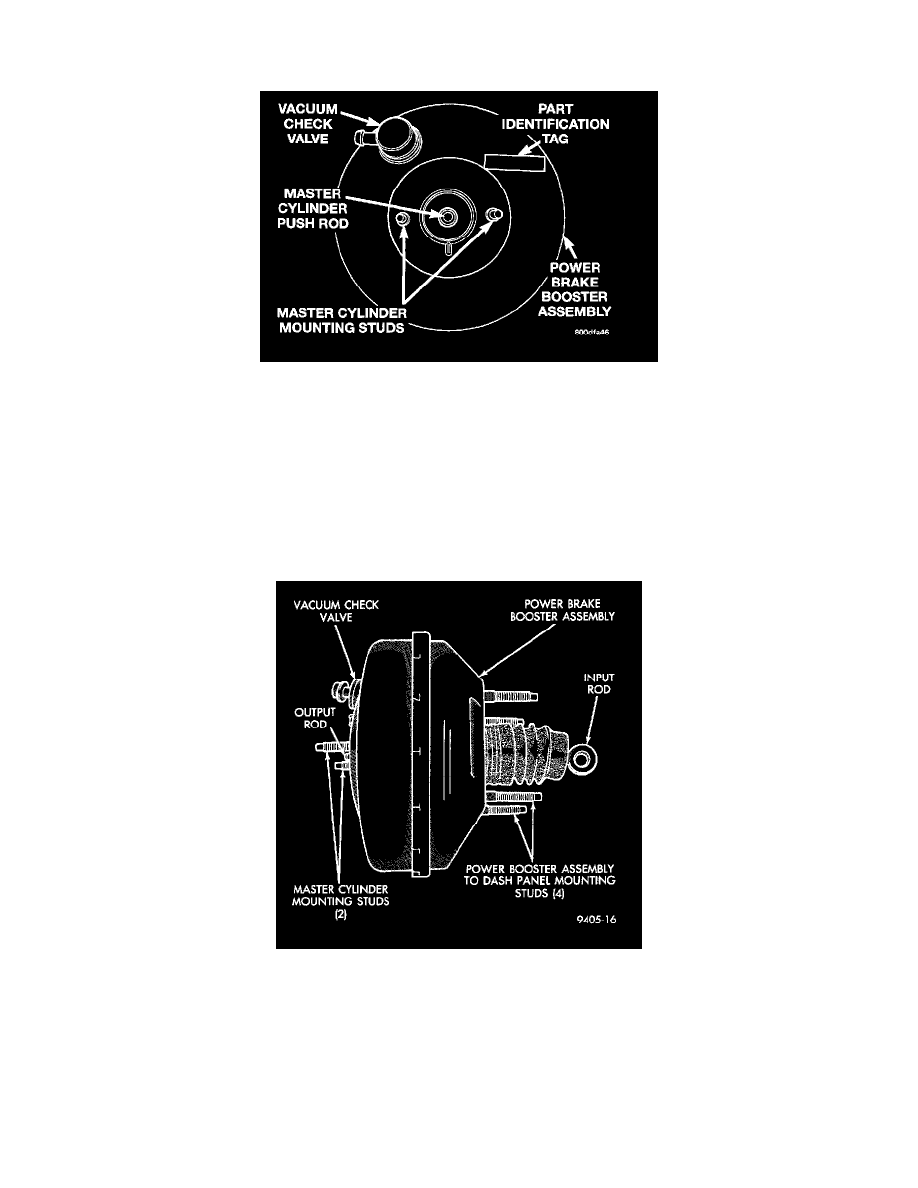Town & Country LWB FWD V6-3.3L VIN G Flex Fuel (1999)

Vacuum Brake Booster: Description and Operation
All vehicles use a 270 mm single diaphragm power brake vacuum booster.
Power Brake Booster Identification
The power brake booster can be identified if required, by the tag attached to the body of the booster assembly. This tag contains the following
information: The production part number of the power booster assembly, the date it was built, and who was the manufacturer of the power brake
vacuum booster.
NOTE: The power brake booster assembly is not a repairable component and must be replaced as a complete assembly if it is found to be faulty in
any way. The check valve located in the power brake booster is not repairable but it can be replaced as an assembly separate from the power brake
booster.
The power brake booster reduces the amount of force required by the driver to obtain the necessary hydraulic pressure to stop vehicle.
Power Brake Booster Assembly
The power brake booster is vacuum operated. The vacuum is supplied from the intake manifold on the engine through the power brake booster check
valve.
As the brake pedal is depressed, the power brake booster's input rod moves forward. This opens and closes valves in the power booster, allowing
atmospheric pressure to enter on one side of a diaphragm. Engine vacuum is always present on the other side. This difference in pressure forces the
output rod of the power booster out against the primary piston of the master cylinder. As the pistons in the master cylinder move forward this creates
the hydraulic pressure in the brake system.
